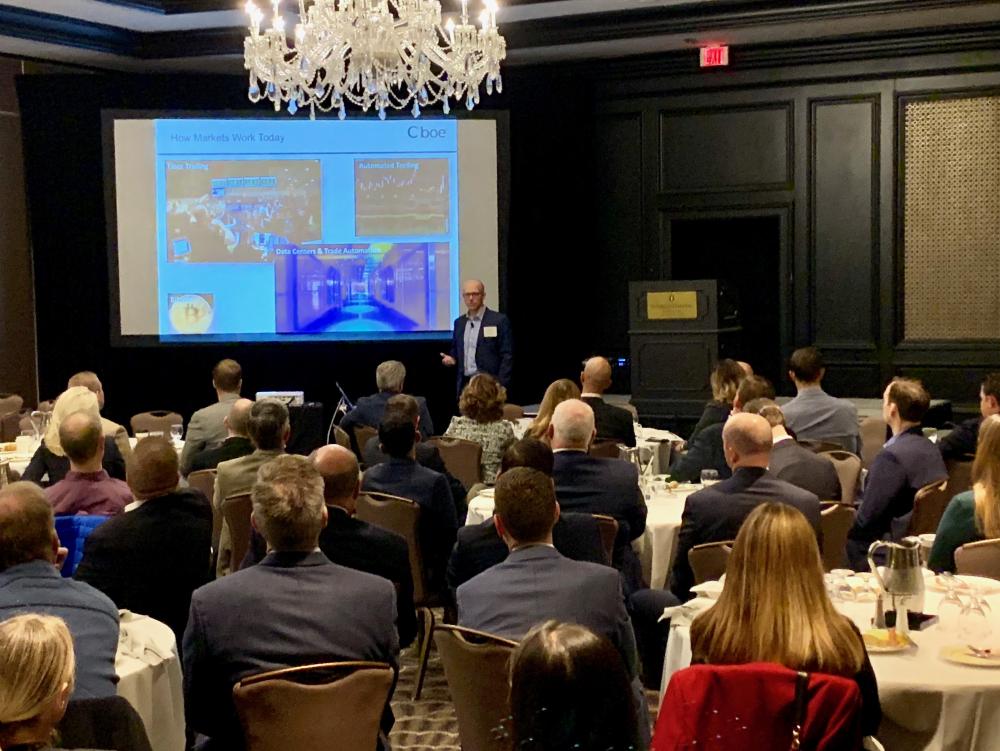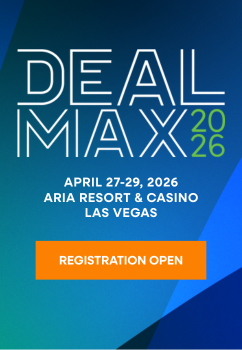
The Bats team successfully built itself, re-built itself and joined forces with Cboe (a late 20th Century financial market success story) to become one of the world’s largest exchange holding companies.

When you hear Chris Isaacson matter-of-factly rattle off the history of Cboe Global Markets and Bats Global Markets, it’s hard to forget how impressive it really is. After all, when Isaacson and 12 others started BATS in 2005, it was the first time in decades that anyone had successfully started another exchange. And to do it in Kansas City? That made the feat even more impressive. These were Midwestern kids--Isaacson a farm kid from Nebraska--and here they were, taking the financial world by storm.
Since then, the Bats team successfully built itself, re-built itself and joined forces with Cboe (a late 20th Century financial market success story) to become one of the world’s largest exchange holding companies.
Isaacson, Cboe EVP and Chief Information Officer, told his story and the story of Bats to about 100 people at a recent ACG breakfast meeting.
Let’s go back to the beginning:
Isaacson grew up on a farm near Kearney, Nebraska. He credits the farm life and his father with instilling in him a sense of responsibility and stewardship to care for the land and others. After earning a bachelor’s degree from Nebraska Wesleyan and a master’s degree from the University of Nebraska-Lincoln, he made a life-changing decision. With job offers from both Microsoft and Cerner, Isaacson chose to move to Kansas City and work at Tradebot Systems until Bats was spun off into an independent company.
Bats started with nothing and within six months had built a platform, trading 1 million shares a day. In 2008 it became a full-fledged exchange. That in and of itself was a feat since, as Isaccson stated, “many thought the SEC wouldn’t do that – issue another license for an exchange.” Bats grew at a phenomenal rate for several years. In 2010, the company started its own options market.
But tough times were ahead.
“We learned some of our greatest lessons through failure,” Isaacson said.
In 2012 the company tried to go public on its own exchange. The much-anticipated day arrived for the IPO launch and the technology failed. A bug in the system took the exchange down. Although the problem was fixed within 30 minutes, the damage was done.
“It was embarrassing,” Isaacson said. “The next year was difficult, but I’m so proud of what we did. We came back more prepared for another IPO in 2016. It went well.”
Part of that pride comes from the culture he and his business partners built at Bats and are incorporating at Cboe, as well.
“Stay humble, hungry and smart is the simple way to describe the philosophy,” Isaacson said. “Our recruitment is rigorous. It’s easy to find hungry and smart people, but to find genuine humility is much harder. Our approach has served us well.”
In 2016, Cboe announced it planned to buy Bats, closing the deal on February 28, 2017. Why did that make sense? Why does it continue making sense? It’s simple really, Isaacson said.
“It’s because of both of their histories,” he said. “Cboe has great products and Bats is a great exchange. Together they are a great powerhouse.”
Isaacson is bullish about the company’s future for good reason.
For starters, the newly merged company has a full life cycle of products which only strengthens their position as a leading global exchange operator, he said.
“The growth story of Bats is about our continued growth through technology,” he said. “Cboe has growth through tradeable products.”
Secondly, Bats technology is state of the art and a proven platform. The technology is fast and efficient.
“Our margin for error is near zero percent,” he said. “Our third-quarter up time was 100 percent. It has to be that way.”
Releasing software updates to every platform on a weekly basis helps keep Cboe’s technology not just error-free, but on the leading edge of technology and information.
“We are constantly delivering new products to our customers,” Isaacson said. “We invest as much time in testing as we do development.”
Isaacson thinks of the company as a technology firm that happens to be operating exchanges. To that end, the company combines the best of technology with a live-action trading floor in Chicago.
“We still have a floor for our VIX and SPX (products),” he said.
The company has been able to take advantage of changes in the markets as well.
“Technology has disrupted the status quo,” he said. “The net result has been incredibly good for investors.”
With little to no commissions being paid these days by investors and the ability to get the price you see on the computer instantly, retail investors especially are in a good place, Isaacson said. Additionally, the advent of Exchange Traded Funds/ETF’s is changing the landscape.
“We list about 300 – although NYSE Arca lists more than us,” he said. “I think over time ETFs will usurp mutual funds because of technology.”
Isaacson is forward-looking and excited about the future for Cboe. The company just completed a successful third quarter on 15 platforms:
- Nearly 700 billion orders processed
- More than 900 million total order executions
- Platforms processing millions of messages per second
- A majority of platforms operating at less than 100 microseconds latency
- 100 percent system uptime
As Bats and Cboe continue their transition to one organization, Isaacson looks forward to the result. While there are stumbles along the way, the two companies are finding many similarities. The cultures of the two companies, their commitments to innovation and their family cultures mesh well, he said.
“We’ve been able to see where our shared values are, and where we can both improve,” Isaacson said.

The premier conference for middle-market M&A will return to the ARIA Resort & Casino in Las Vegas on April 27–29, bringing together the most influential private equity dealmakers, investment bankers, lenders, M&A partners, and strategic acquirers—all under one roof.
